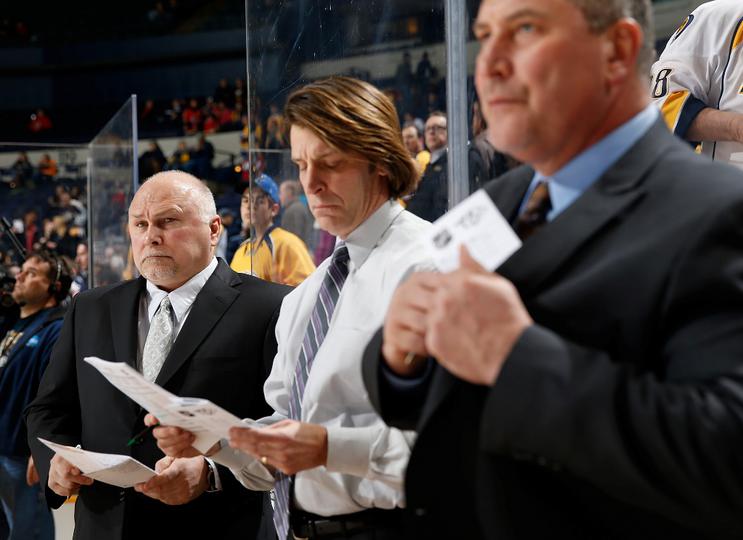Actually, yes.
Before the 2013-14 NBA season started, Grantland’s own Bill Simmons and Jalen Rose predicted the Milwaukee Bucks would be a playoff team. Truth be told, I didn’t disagree with their prediction — it seemed to me that the Bucks, while lacking conventional star power, had assembled a team flush with intriguing and rangy veterans. Coming off an eighth-seed appearance in 2012-13, I didn’t think it would be ridiculous for the Bucks to once more make a first-round cameo in the volatile Eastern Conference.
Oops. The Bucks got off to a 2-13 start and never managed to change the trajectory of their season after that. Milwaukee was one of the few Eastern Conference teams to never approach playoff contention, playing out a string of ill-attended blowouts on their way to a league-worst 15-67 record.
Did anything go right in Milwaukee? Are there any positives that this team can build off of for 2014-15 — a way for them to lift themselves out of the cellar?
Actually, yes. Here are three positive traits I saw from this otherwise forgettable Bucks team:
1. Shot-Blocking Prowess
The Bucks finished 11th in the league in blocking their opponents’ shots, and did so even though their best shot-blocker, Larry Sanders, played in only 23 games, compiling a Block percentage (5.6) that drooped well below his career average (7.3). John Henson came into his own in his sophomore NBA season, lifting his Block percentage from 3.7 to 5.1. Ekpe Udoh (4.4), Jeff Adrien (2.4) and Miroslav Raduljica (2.3) filled out the rest of Milwaukee’s frontcourt rotation as intimidating rim presences. Beloved rookie Giannis Antetokounmpo managed a respectable 2.6 from the wing.
When Milwaukee’s astoundingly long frontcourt gets healthy and/or fully acclimated to the NBA, it should be incredibly tough for opposing teams to score from the key.
2. Tenacity In Offensive Rebounding
The Bucks finished 12th in the league in offensive rebound percentage — again, doing so without Sanders, arguably their best player at gathering offensive boards. All members of the Milwaukee frontcourt tenaciously pursued second-chance opportunities: Raduljica’s OReb% was 12.9; Zaza Pachulia’s was 11.8; Adrien’s was 10.9; Henson’s was 10.2. (For comparison, Dwight Howard’s OReb% this season was 11.4.)
It couldn’t have been easy to fight for these hard-to-reach balls with the team so far down in so many games. The fact that Milwaukee nonetheless excelled at this metric speaks volumes about their internal motors and dedication to the game.
3. Identification of Young Talent
This is easily the most important trait that the Bucks (and their front office) have shown over the last twelve months. Picking from 15th overall in the ill-regarded 2013 NBA Draft, the Bucks unearthed a total gem in Antetokounmpo, a player whom many believe would go first overall in a hypothetical redraft of 2013 prospects. The fact that the Bucks found a future franchise cornerstone in the middle of the first round is a skillful coup that cannot be overlooked.
Milwaukee’s rookie class did not end there. After a series of draft-night trades, the Bucks turned their original second-round draft pick, Ricky Ledo (43rd overall), into Nate Wolters (38th overall). In his rookie year, Wolters was either first or second among all second-round picks in minutes per game, points per game, assists per game — even rebounds per game.
The Bucks even found a productive role player on the undrafted free agent market: Raduljica finished fifth in the entire rookie class in Win Shares/48 during his limited but efficient minutes.
Milwaukee’s ability to find productive contributors in a draft class that was popularly believed to lack talent is an impressive accomplishment. This year, in a draft that is believed to be far deeper, the Bucks could go a long in way filling out their rotation of the future, as they own picks 2, 31, 36, and 48.
Although the Bucks have made puzzling moves in evaluating NBA veterans — see their wildly inefficient 3-year, $24 million signing of O.J. Mayo last summer — their ability to find prospects, especially international free agents, could be what elevates this team into playoff contention.
Add The Sports Daily to your Google News Feed!
